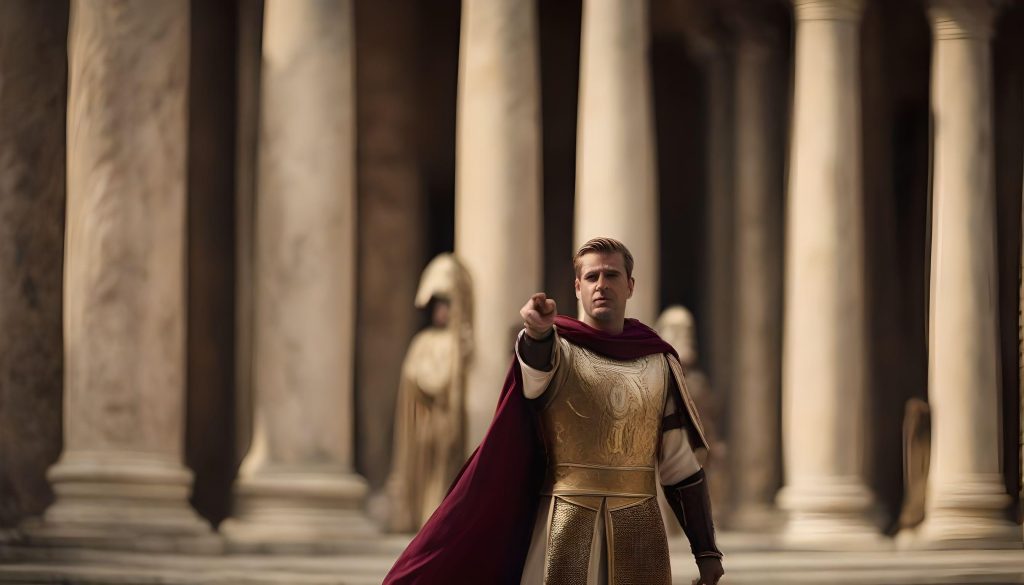The Roman Catholic Church, an institution wielding significant influence over centuries of Western civilization, invites inquiry into its genesis and early advancements. At the crux of this investigation lies the intriguing question: who effectively created the Roman Catholic Church? Understanding its origins requires navigation through historical intricacies, theological developments, and the profound impact of its early leaders.
The roots of the Roman Catholic Church stretch back to the earthly ministry of Jesus Christ. His teachings, miracles, and the radical ethos of love and forgiveness established a foundation upon which followers would build a burgeoning movement. After the crucifixion and resurrection of Christ, the apostles emerged as pivotal figures in disseminating the faith. They embraced the mission of evangelization. The claim that Peter, often regarded as the first pope, was the rock upon which Christ built His Church is paramount in Catholic belief.
Peter’s leadership is not merely anecdotal; careful textual analyses of the New Testament elucidate his central role. The Gospels depict Peter as a spokesperson for the apostles, a leader amidst internal disputes. His apostolic authority, particularly after the Pentecost, is celebrated through the early Christian community in Jerusalem, which laid initial ecclesiastical structures. Here, we witness the inception of a clergy committed to nurturing faith amidst a polytheistic Roman landscape.
Moreover, the conversion of Saul of Tarsus, later known as Paul the Apostle, marks a substantial turning point in Christian history. Through his relentless missionary journeys, Paul reached out to Gentile communities, affirming the universality of the Christian message. He authored epistles that not only addressed theological concerns but also functioned as seminal doctrines shaping ecclesiastical practices. The establishment of diverse Christian congregations across the Roman Empire contributed to a growing sense of unity among disparate followers, albeit with variations in practice and belief.
Amidst this tapestry of growth, conflicts arose. The early Church grappled with various heretical movements challenging orthodox teachings. The Gnostic sects, for instance, introduced interpretations of Christian doctrine that diverged significantly from apostolic teachings. It was the Church’s response to heresy that led to the formalization of the canon of Scripture and the establishment of creeds. The Nicene Creed, formulated in the early fourth century, represents a critical moment of consolidation, reinforcing the Church’s foundational beliefs against the backdrop of theological discord.
As the political landscape of the Roman Empire evolved, a symbiosis between church and state began to emerge. The Edict of Milan in 313 AD, issued by Emperor Constantine, marked a watershed moment, granting Christians the freedom to worship openly. This watershed transition from persecution to prominence encouraged Christians to articulate a more robust ecclesiastical identity. Constantine’s patronage catalyzed numerous developments, including the construction of significant basilicas and the convening of ecumenical councils.
The establishment of Rome as a center of Christian authority further illustrates the evolution of the Church. By the late fourth century, the bishop of Rome was increasingly recognized as the spiritual leader of all Christians in the West. This stemmed from both an implicit recognition of apostolic succession and the strategic geographical significance of Rome itself. The notion that Peter, as the first bishop of Rome, endowed his successors with legitimate authority contributed to the papacy’s sacrosanct position in ecclesiastical matters.
In exploring the early leaders, figures such as Ignatius of Antioch and Irenaeus of Lyons come into prominence. Ignatius’ epistles stress the importance of unity and the emergence of hierarchical structure within the Church, urging adherence to bishops’ authority. Irenaeus’s works countered Gnostic teachings and emphasized apostolic succession as a means of preserving the authenticity of Christian doctrine. The writings of these leaders serve as critical insights into how early Christians understood authority, tradition, and community, offering a glimpse of the complex relationship between governance and spirituality within the nascent Church.
The emergence of monasticism during the fourth and fifth centuries also contributed substantially to the development of the Roman Catholic Church. Figures such as St. Benedict established monastic communities that adhered to rigorous spiritual disciplines. These communities became intellectual hubs, safeguarding theological texts and influencing the broader culture. Monks engaged extensively in education and scholarship, nurturing spiritual and intellectual life, which would later influence Western civilization profoundly.
Yet, the fascination with the origins of the Roman Catholic Church transcends mere historical recounting. It encompasses a tribute to human resilience in faith, the undulating struggles against adversities, and the yearning for connection with the divine. The Church’s journey from a marginalized sect to a dominant institution intricately intertwines with the socio-political evolution of the West, symbolizing a profound intersection of faith and culture.
In conclusion, the creation of the Roman Catholic Church is not attributed to a singular founder but rather to a collective effort of early leaders, theological evolutions, and historical contexts. The enduring legacy of this institution rests upon its ability to adapt while remaining anchored in the foundational tenets established by Christ and His apostles. The fascination surrounding its origins invites both scrutiny and reverence, challenging individuals to engage with its historical narrative and ponder its implications for contemporary faith pursuits.



